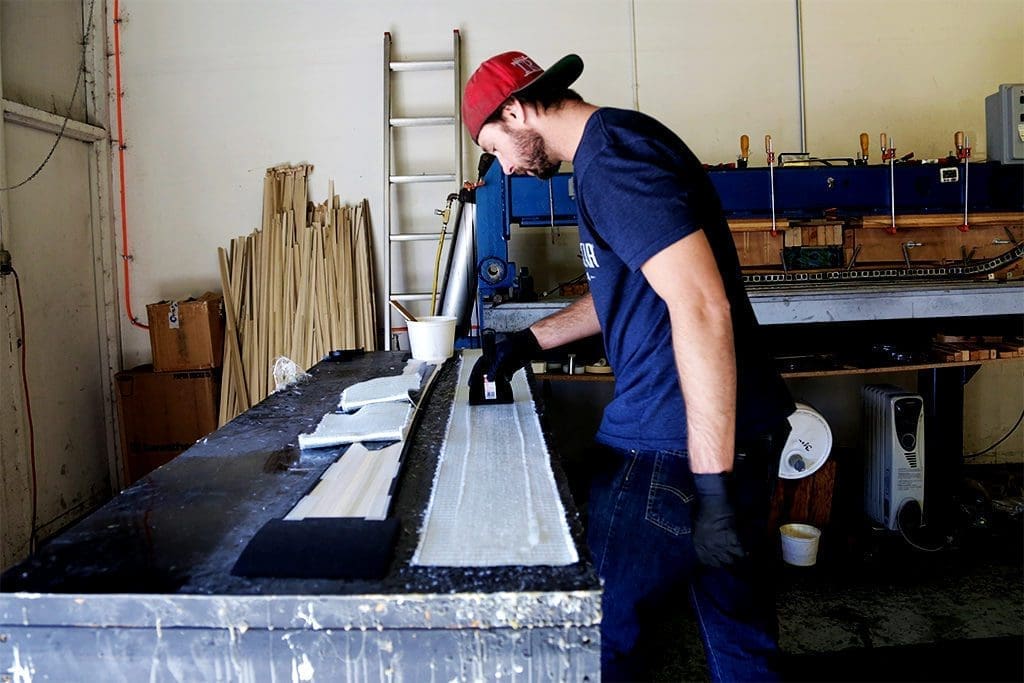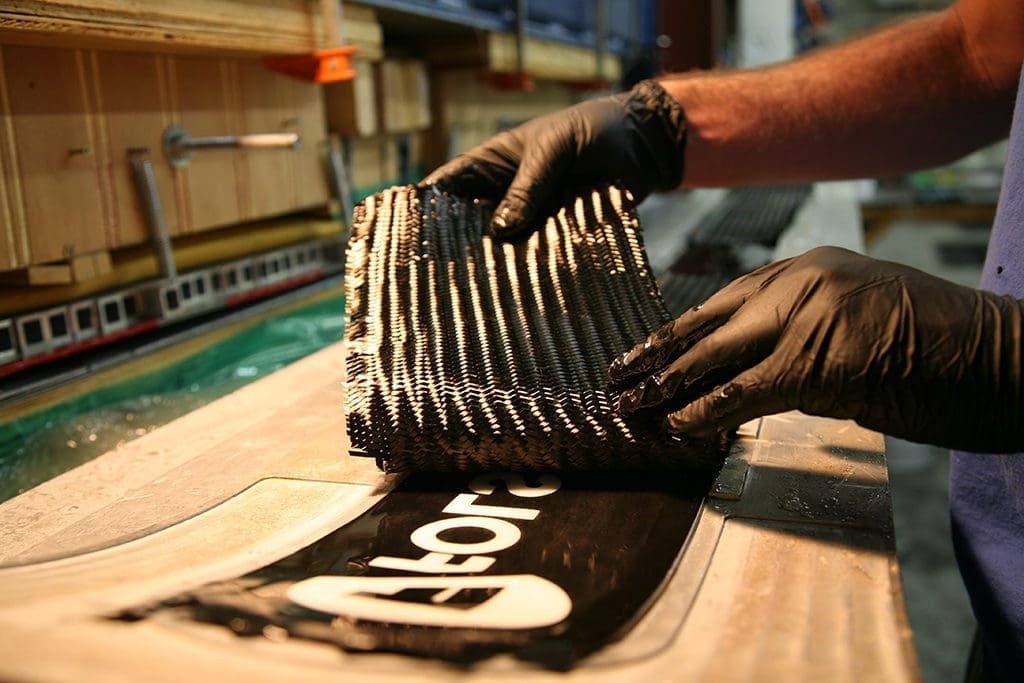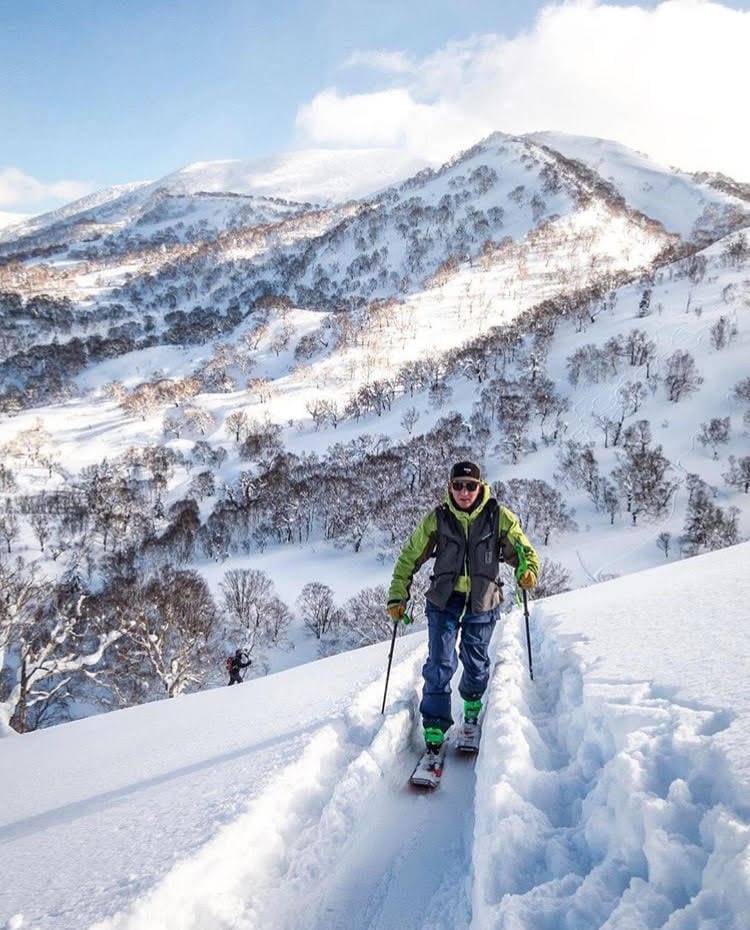For decades, the ski industry has been throwing buzzwords at consumers, advertising their latest tech such as “Flip Core”, “HRZN Tech”, “V-Werks”, and “TRN-TEK” (oh wait, that was us). A major player in the ski tech game particularly over the last few years has been carbon fiber and how it can be strategically used in ski construction to maintain stiffness and drop weight. Ski brands like DPS, Dynafit, and Voile have started marketing and selling full carbon builds that boast top-notch weight savings for a premium price. But as is true for any construction type, tradeoffs must be accounted for, and to do so, one must understand exactly what it means to buy a carbon fiber ski…
To put things in perspective, let’s first define what part of the ski we’re referring to when we talk about “carbon skis”. Here, the word “carbon” refers to the composite laminate that adds pliable support and bonds your skis together, meaning it runs the full width of the skis from tip to tail in multiple layers: (1) between the topsheet material and core, and (2) between the core and base material.
For traditional construction styles and most resort-based skis, this composite laminate is usually fiberglass. Fiberglass by nature is a sturdy composite that, when cured with epoxy, provides a reliable bond to hold your skis together while increasing stiffness and maintaining a dynamic feel. A key property of fiberglass is its damping capability (yes, the correct term is “damping” not “dampening”), meaning that a full fiberglass ski will absorb vibrations that result from variable snow, creating a smoother connection with the snow. On the downside, saturated fiberglass doesn’t exactly fall into the featherweight class and can lead to skier fatigue quicker during long days in the backcountry.

For a pair of carbon skis, the laminate that bonds the topsheet and base to the core of your skis is changed from fiberglass to carbon fiber. Carbon by nature is another great bonding agent that keeps skis from delaminating many years into their lifetime (assuming your skis are built in proper fashion). The upside of replacing fiberglass with carbon fiber is primarily weight savings, typically in the 100-200 grams per ski range if all other variables on the build stay the same (that translates to just shy of a pound for a pair of skis). This is certainly preferred for those that use their skis for long uphill approaches, and need to have every ounce of energy conserved not only for the downhill, but also for the next day’s mission. The main downside of carbon fiber is that it doesn’t possess nearly the same degree of damping that fiberglass does. By lacking dampness, carbon skis are frequently blamed for being “chattery” or “squirrely”, particularly on mixed snow conditions and at higher speeds. This can often be disappointing for the consumer who paid a premium for carbon skis, and thought that the lightweight platform would hopefully get the job done for their skiing… frequently not the case.

Companies are taking measures to try to make their carbon skis damper by infusing the carbon with other composite additives, or using exclusively the dampest woods for their cores, but only so much progress can be made without the addition of a some fiberglass used for lamination.
What’s our solution? We start with unidirectional carbon fiber stringers (1.5” and 3” wide strips placed strategically above and below the core) on all of our skis. These allow us to use less composite to cover the whole ski for weight savings from the get go. From here, we offer three different options for the composite layup on our custom skis. The first is our “90 / 10 Glass Carbon” construction which is the standard choice for any resort or aggressive skier looking for a smooth and stable ride. Keeping the unidirectional carbon stringers, we then add on two full sheets of fiberglass with an additional binding pad, making for a ratio of about 90% fiberglass, 10% carbon fiber (hence the name) for the composite structure. On the other side of the spectrum, our second option is a “100% Carbon Fiber” ski, built for those that require a lightweight product, usually with uphill in mind. Ideally these skiers will primarily be accessing softer snow, making the the lack of dampness less of an issue. Our third option is a middle ground between the first two, called our “70 / 30 Glass Carbon” build. This build eliminates about 20% of the fiberglass in a 90 / 10 ski and substitutes a piece of tri-axial carbon fiber in its place for added support (typically only on longer stiffer builds). Weight reduction usually falls into the 50-100 grams per ski range for 70 / 30 builds, making them a great choice for skiers accessing a mix of resort and backcountry terrain, or for those that are just a bit more sensitive to their skis’ weight.

The bottom line here is that going with a carbon ski does in fact affect your downhill performance. It may be lighter, but it is drastically less damp which can lead to chatter in harder conditions. If the allure of carbon skis is enticing you to buy a pair, just know what you’re getting yourself into. Our recommendation is that if you’re skiing any resort terrain whatsoever, it’s generally a good idea to have a some fiberglass in your ski. That said, every skier is different, so if you have any questions about what the right choice for your skiing is, don’t hesitate to get in touch or fill out a custom fit form to chat further.